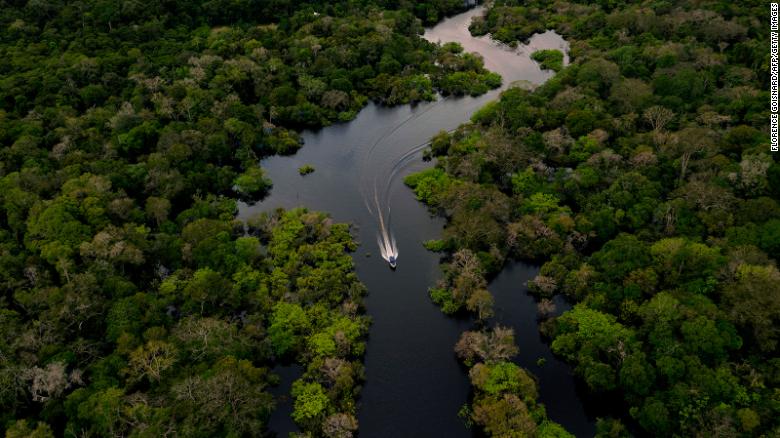
Parts of the Amazon rainforest are now emitting more carbon dioxide than they absorb, raising fears of the potentially devastating impact on its fragile ecosystems and a further worsening of the climate crisis, according to a new study.
The research, published Wednesday in the scientific journal Nature, says the Amazon’s vital role as a carbon sink — absorbing massive amounts of heat-trapping carbon dioxide from the atmosphere, helping to cool the Earth — is under threat.
“This carbon sink seems to be in decline,” the study said. “Over the past 40 years, eastern Amazonia has been subjected to more deforestation, warming and moisture stress than the western part, especially during the dry season.”
Over nine years, researchers led by Brazil’s National Institute for Space Research conducted close to 600 flights over four main sites in the Brazilian Amazon, collecting data on the amount of carbon dioxide and carbon monoxide in the atmosphere.
They found that collectively, these four sites emit 410 million metric tons of carbon dioxide per year, caused mainly by large fires — often set by humans. These emissions are partially offset by the same regions absorbing about 120 million metric tons of carbon per year; but that’s still 290 million metric tons in net emissions — about the same as the entire country of Thailand produces in a year.
These damaging factors — deforestation, land burning, and effects of climate change — “may have lasting, negative consequences for both the carbon balance of the region and the fragility of its ecosystems,” warned a news release by Nature.
The Amazon, roughly half the size of the 48 contiguous United States, is the largest rainforest on the planet. Its environment is intricately linked with the balance of its ecosystems, home to countless species of fauna and flora.
When the rainforest is healthy, its trees and plants pull billions of tons of heat-trapping carbon dioxide from the atmosphere each year, releasing oxygen back into the air. And its vast tree canopy serves as an “air conditioner” for the planet, scientists say, influencing global temperature and rainfall patterns. It is one of the planet’s best defenses against climate change.
But in the past 40 to 50 years alone, the rainforest has undergone tremendous and disruptive change due to human impacts. It has lost 17% of its forest, most of which has been turned into agricultural land for farming and livestock. This, in turn, has caused temperatures to rise and water evaporation to drop, meaning less rainfall.
During the study’s nine years, the southeastern Amazon in particular has switched from a carbon sink to a “substantial carbon source,” as deforestation and fires increased in frequency and severity, the study said. These factors, along with global climate change, are causing temperatures to increase steadily — and “these changes appear to be accelerating,” it added.
Deforestation and logging have also made the land more vulnerable to fires, which then cause greater damage in an ongoing cycle. The Amazon wildfires made international headlines in 2019 when they burned out of control, at the highest rate on record; at one point, 1½ soccer fields of the rainforest were being destroyed every minute.
Much of this is caused by humans, according to environmental organizations and researchers. Even during dry seasons, the Amazon — a humid rainforest — doesn’t catch fire easily, unlike the dry bushland in California or Australia. Instead, many fires are set by farmers and cattle ranchers who want to clear and utilize the land — emboldened, activists say, by pro-business Brazilian President Jair Bolsonaro, who made campaign promises to restore the economy by exploiting the Amazon’s economic potential.
Other recent research has also suggested the entire Amazon may soon flip to become a net carbon source instead of sink. One 2020 study found this could happen by 2050 — or sooner.
Though the 2019 fires have since subsided, the rainforest remains at risk; 2020 saw a surge in deforestation, leaving parts of the Amazon parched by drought and loaded with fire-kindling fuel.
Experts say the region has rarely been drier than it is now, and fear a destructive fire season is again looming.
“Climate change doesn’t respect political and geographic boundaries,” said Paulo Brando, an assistant professor and scientist at the University of California-Irvine, last month.
“What happens in the Amazon will affect the entire planet.”
As reported by CNN
